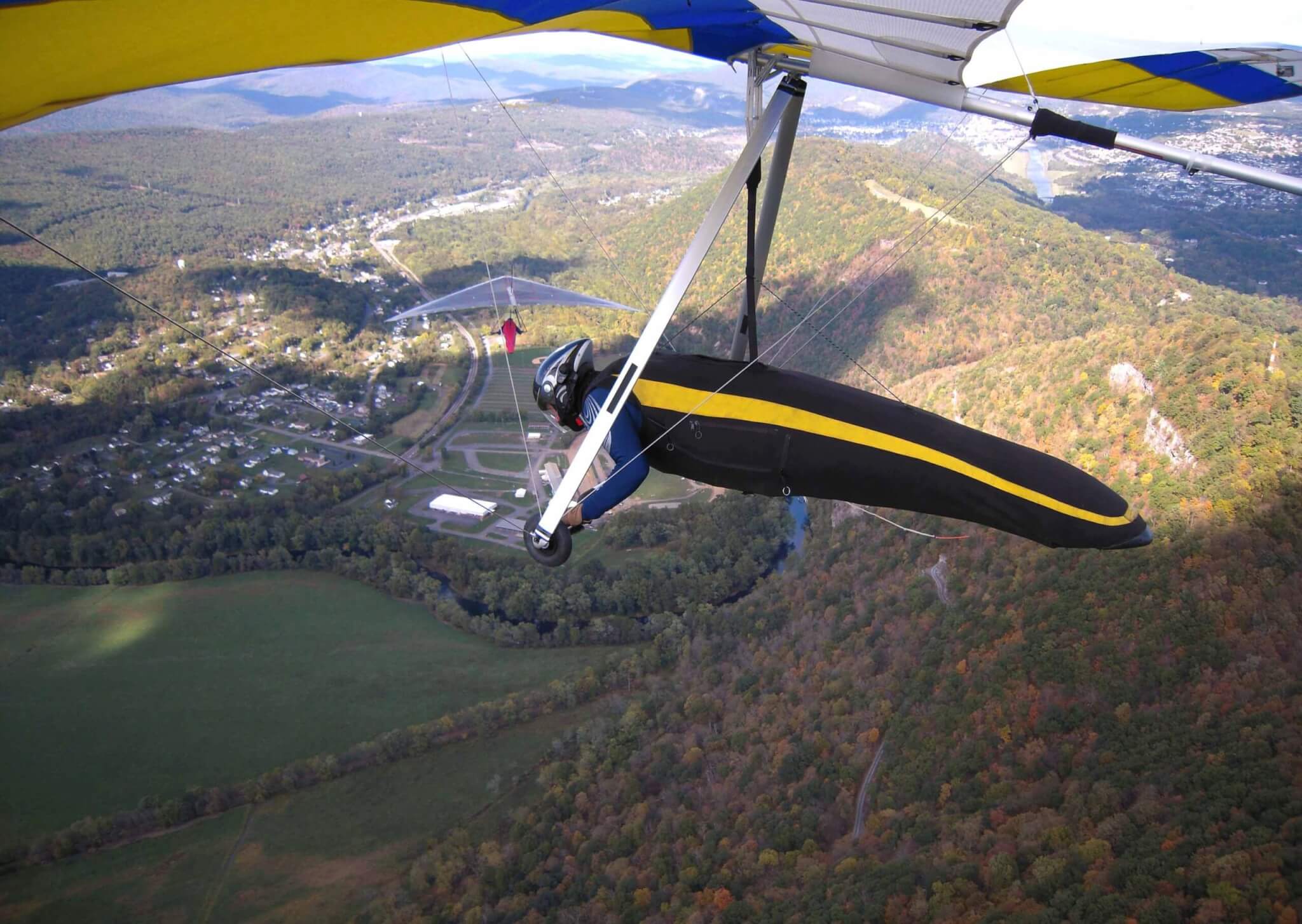
When hang gliding or paragliding, you go where the wind takes you.
Header Image courtesy of Jim Rowan
Jim Rowan doesn’t consider himself to be a thrill-seeker, despite a 40-year history of launching himself—snugly situated in his hang glider—from ridgetops. He’s flown for seven hours at a time, reached distances 100 miles from his take-off, and even soared to 17,500 feet above sea level. But it’s not for the thrill. “I wish I had the words to adequately express how it feels to float thousands of feet above the Earth, with the hawks and the eagles,” he says. “It’s the most peaceful and quiet place I’ve ever been.” And it keeps him coming back for more.
Rowan was born in Fairmont, grew up in Illinois, and, after a long career in the insurance industry, he settled on retirement in Cumberland, Maryland, exclusively so that he could hang glide as often as he wanted to. He was introduced to the sport in his early 20s when a grade-school friend convinced him to head west with him to California, where they would teach themselves to fly like birds.
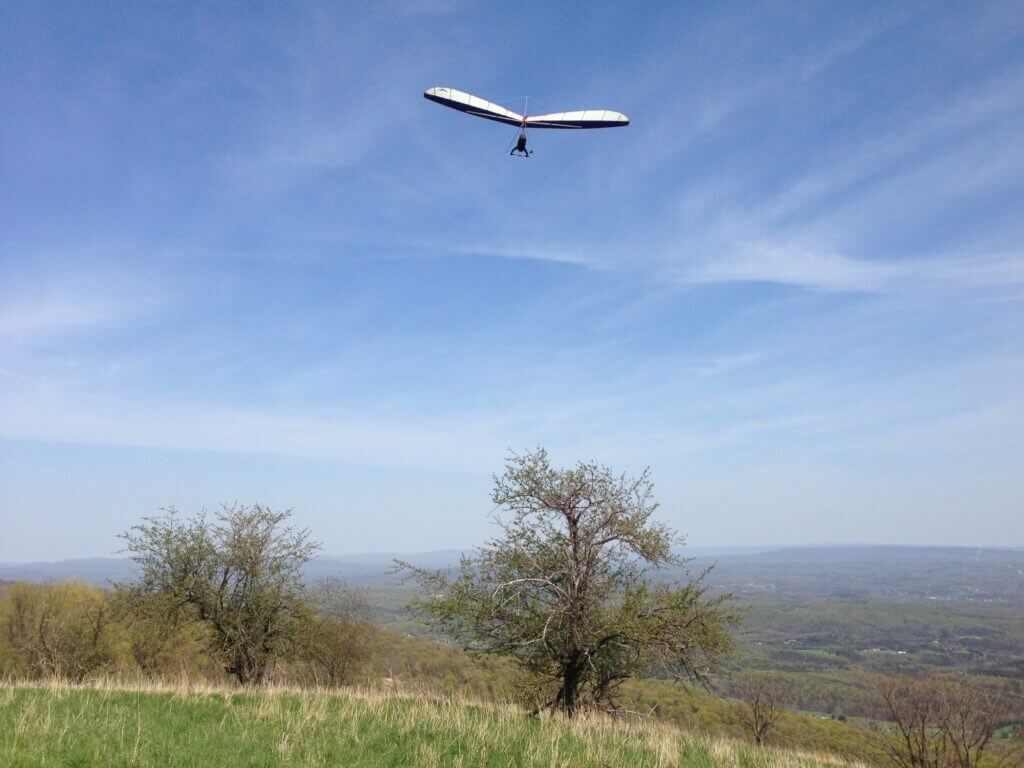
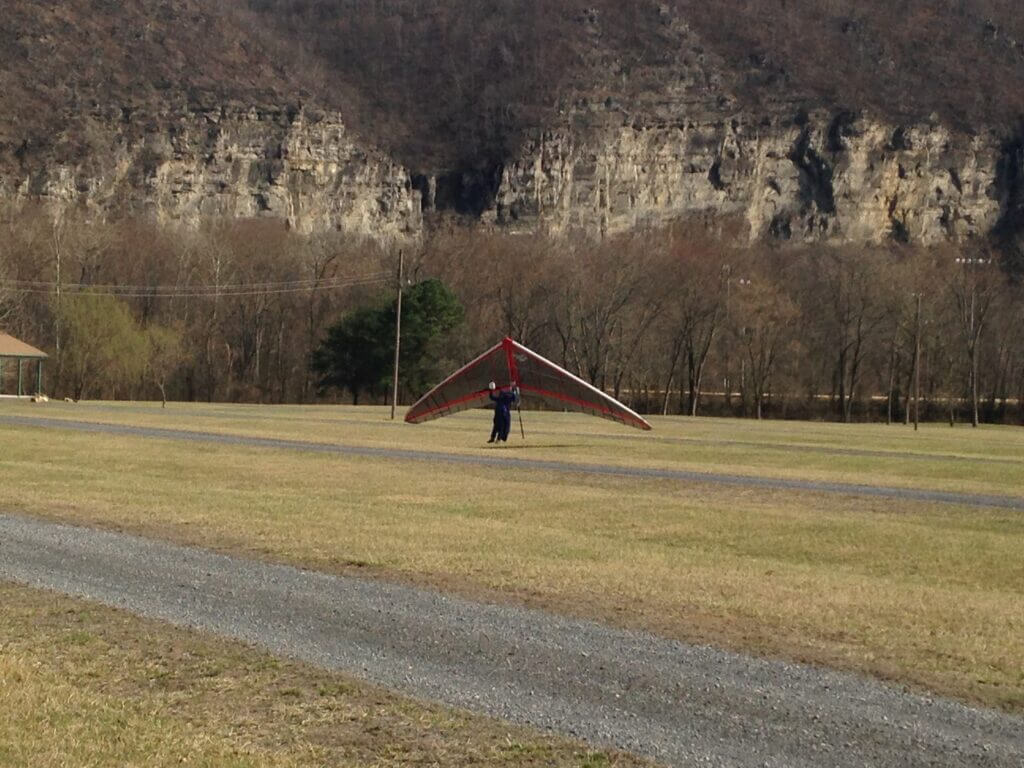
“We had a book, we read it, and then we figured the basics out for ourselves. It was quite possibly the worst way to learn,” Rowan says with a chuckle. “We spent a month practicing on the Southern California dunes overlooking the Pacific Ocean. My very first flight off of a dune south of Tijuana, Mexico, wasn’t even that successful, but in those few minutes of flight I knew that this was what I wanted to do forever.”
His friend kept flying for a year or two before life took over. Rowan never stopped. He eventually returned to the hills of West Virginia, where he was sure he would find abundant flying opportunities. “I searched far and wide for other people hang gliding and couldn’t find anyone, until I spotted a guy driving down the road in Philippi with a glider on his vehicle. I followed him and discovered that there was a group in the north central part of the state calling themselves the Mountaneer Hang Gliding Association,” he says. “I infiltrated the group and told them I didn’t yet have my own glider, but that I was happy to drive them around so that I could just watch and learn.”
Eventually, Rowan secured his own glider, and he’s now the oldest member of the MHGA, whose membership of pilots addicted to flying spend “a minimum amount of time talking about it and a maximum amount of time doing it,” according to the group’s website, www.mountaineerflyers.org. Two of the three sites regularly used by the group as take-off points are in Cumberland, Maryland, hence Rowan’s insistence on living there. The third is in Canaan Valley State Park. All require waivers for use and U.S. Hang Gliding and Paragliding Association membership

Ben Herrick is one of the group’s resident paragliders and got started in the sport by way of his wife, L.E. Herrick. Before the couple was married, she lived in Wenatchee, Washington, which is where the sport first took off in the U.S. in the early 1980s. Ben Herrick explains that paragliding was invented out of necessity. “You had these mountain climbers in France who were wanting to ascend these peaks and who came to the realization that more people got hurt coming down than going up. It got people thinking about paragliding as a means of descending the mountain,” he says. “L.E. looked out of her back window one day and saw paragliders flying off the mountain peak and thought that it was something she definitely wanted to do. She did, and she got me into it when we met.”
The Herricks call Davis home but have paraglided all over the world: the Alps, South America, and even Nepal. He remembers his flight in Nepal, and seeing Annipurna—the 10th highest mountain in the world—in the background. “The mountain looked like it was floating on a cloud. It was crystal clear, and something I’ll just never forget. There are only a few other ways that that vantage point would have been accessible to me.”
And although the couple has ventured far and wide with their paragliding gear in tow, West Virginia is one of the places they enjoy flying the most. “The scenery is wonderful here. The relief of the mountains and the countryside is breathtaking. You don’t quite get to fly the distance here that you can in other places, but the scenery is unmatched,” Herrick says. “In fact people come from all over the world to fly in this region.”
For Those Interested in Taking Flight
MHGA is a great place to find sound advice on getting started in the hang gliding and paragliding world locally. The group is welcoming to anyone with a keen interest. It’s partly because it’s a “graying” sport, Rowan says. Current pilots keep getting older each year, and fewer young pilots are showing up to take their place.
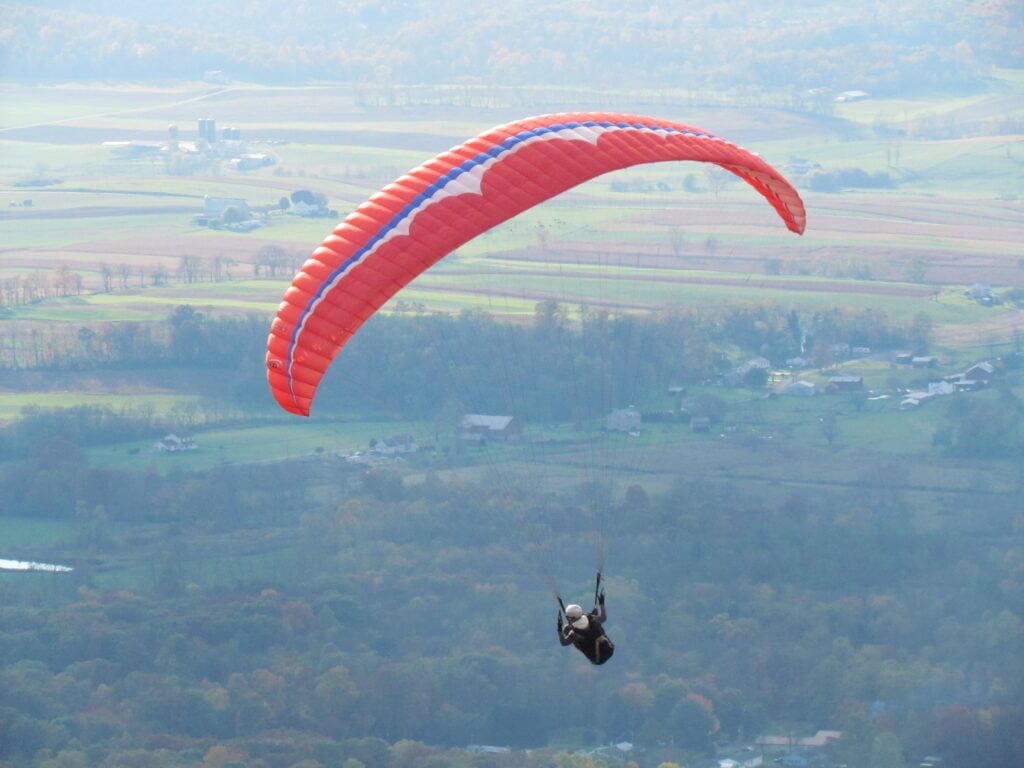
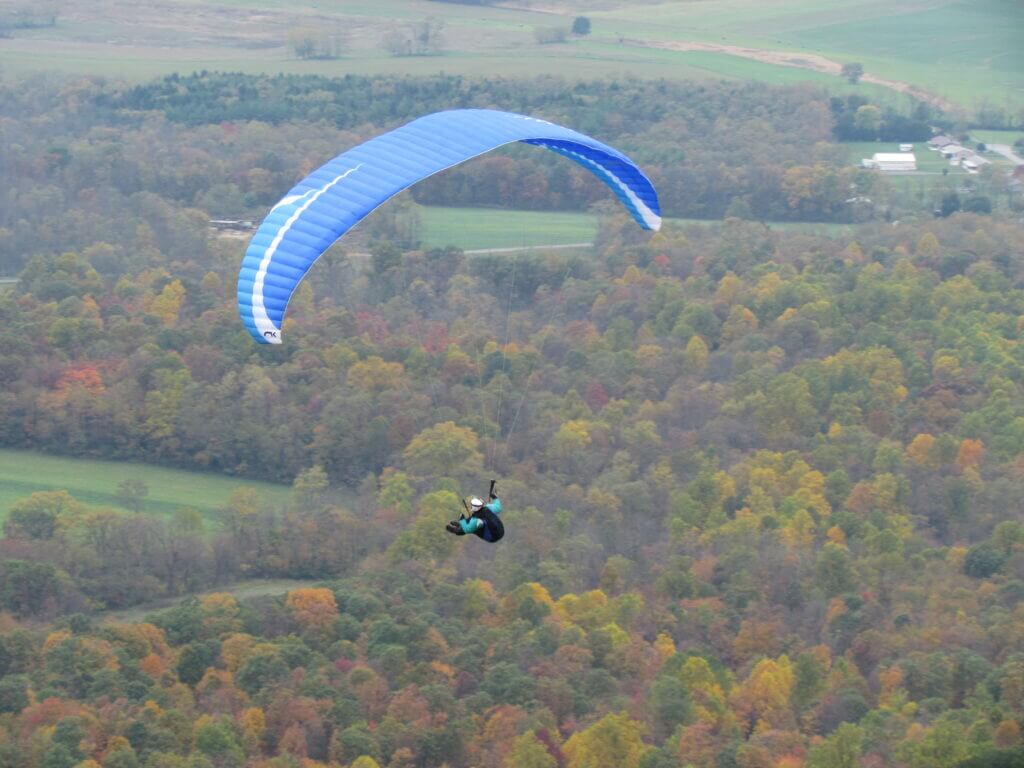
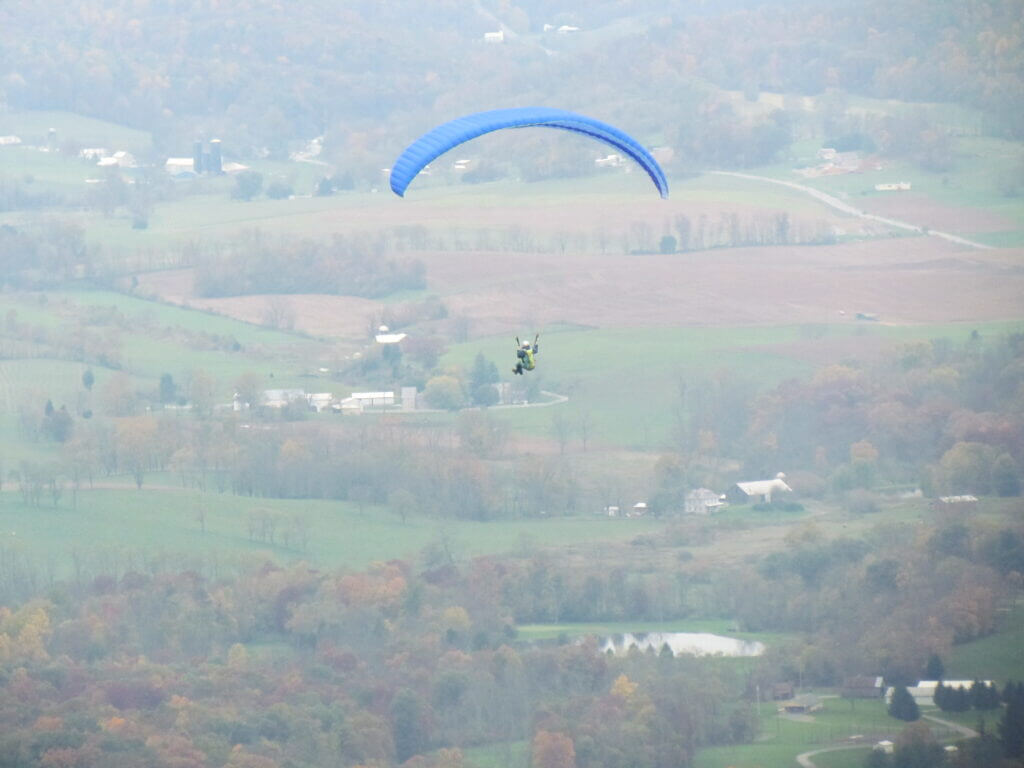
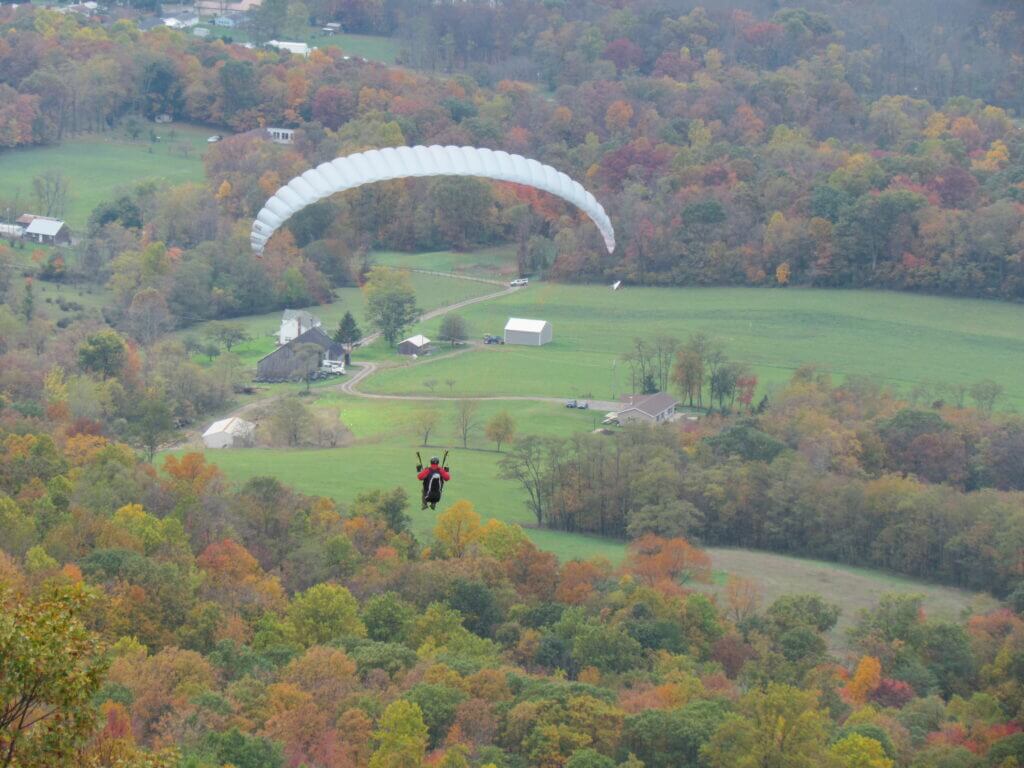
“If someone would do it one time they would see, like I did, that it’s simply the greatest thing ever,” Rowan says. Hang gliding and paragliding aren’t physically demanding sports, he explains. You can be in just average condition, as long as you can lift 50 or 60 pounds on your shoulders.
There are no schools in the region, or teachers for that matter. But there is a healthy collection of seasoned pilots who have a love for the sport and willingness to share their knowledge with others. So anyone out there who’s always wanted to try soaring like an eagle by way of a hang glider or paraglider, consider this your signal that you’ve been cleared for take off.
Fun Flight Facts
What you always wanted to know about hang gliding and paragliding but didn’t know who to ask.
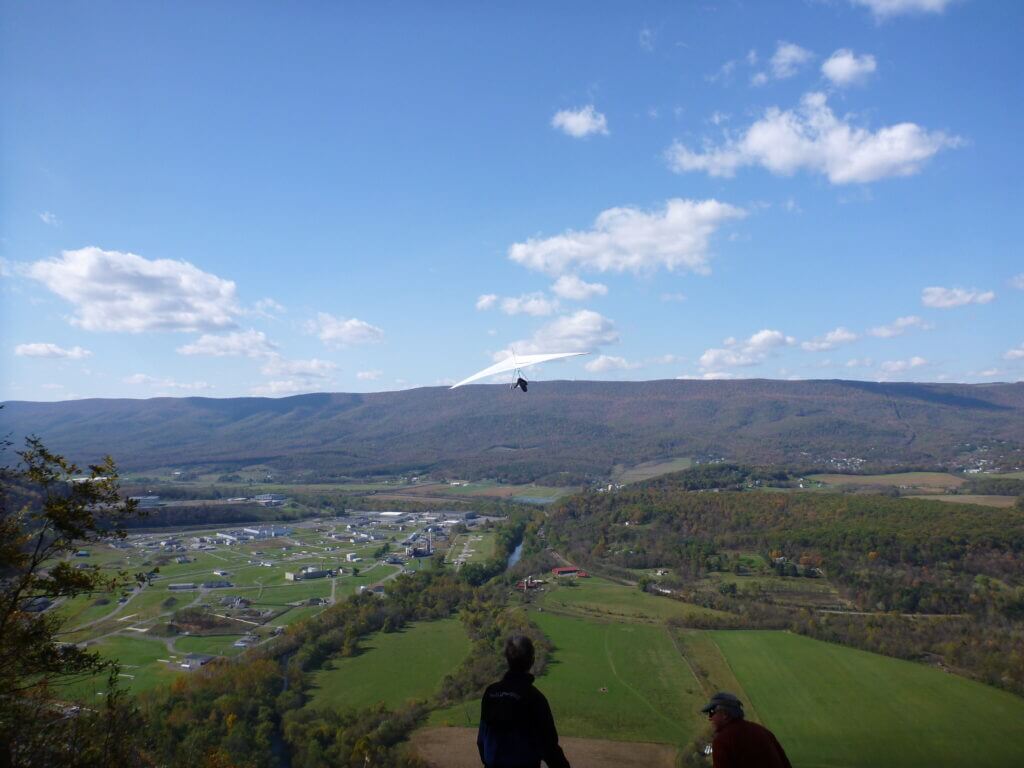
What’s the difference between hang gliding and paragliding?
A hang gliding pilot flies using a rigid, framed metal structure that allows for more stability, faster flying, and flying in more varied conditions. Paragliders catch pockets of air by way of a structure-less, collapsible fabric wing, are lower-profile, and require less space to land. Both types of pilots fly with rescue parachutes in the event of an emergency.
How do you learn?
The best way to learn is to find someone who knows what they’re doing, just like hang glider pilot Jim Rowan. He says new pilots typically start off by running down a training hill, where they figure out the basics like steering. Then, they’ll go to a high place on a day when it’s very calm. Fellow pilots launch them off the hill, and they might get a five-minute flight. “When you do that for the first time, it’s so satisfying,” Rowan says.
Then, pilots progress to longer flights, soaring, and sustaining flight. “At some point around this time, you start thinking about how far you can go and about testing that” he says. “They call that cross-country, where you essentially head for the horizon.”
How do you know where to land?
This is a tough issue for most pilots. Some landowners are welcoming to pilots, but not all of them. “A lot of people are afraid to get sued,” Rowan says. “It’s just the world we live in.” West Virginia does have a Recreational Use Law on the books that encourages landowners to open their property to others for the purposes of recreation, limiting their liability in this regard. The MHGA has relationships with landowners throughout the state, maintains take-off areas, and is the best resource for finding out where to fly—and land.
How high can you fly?
Legally, hang gliding and paragliding pilots are allowed to fly up to 17,999 feet. The area above that is called “positive air space” and is controlled by the Federal Aviation Administration. Altitude sickness can also set in, as well as hypoxia, during sustained flight at those altitudes. “Nowadays, almost everyone planning on reaching those altitudes is flying with oxygen,” Rowan says. “But it’s entirely possible. In West Virginia, you’re more likely to fly in the 5,000-foot range on a good day and the 10,000-foot range on a great day. “
When is the best time to fly in West Virginia?
The best days for flying come in the spring, early summer, and the fall, according to Rowan. There are usually three or four days a month with the perfect weather conditions for flight, and those conditions could theoretically happen any time of the year. Ben and L.E. Herrick love flying in the fall. “It’s an incredible way to see the fall colors,” Ben Herrick says.
How do you get home after a 100-mile flight?
Rowan says many hang gliding and paragliding pilots are also ham radio operators. Working in teams, they can communicate a pilot’s progress and landing location, when the pilot has the luxury of a dedicated driver.
For less organized outings, pilots like Ben Herrick carry signs that say “Pilot needs a ride” to find their way home. “A lot of people might even see you land. They’re curious and they start asking questions. If you’re lucky, you might be able to catch a ride,” Herrick says.
What’s it feel like when you’re standing on a ridge about to launch?
“It’s full of anticipation. I get butterflies when I’m waiting on a ridge for the right breeze to come. My awareness is heightened. I will always have a little bit of apprehension, and that’s probably a good thing,” Rowan says. For Herrick, it’s more simply put: “It’s just pure magic.”











